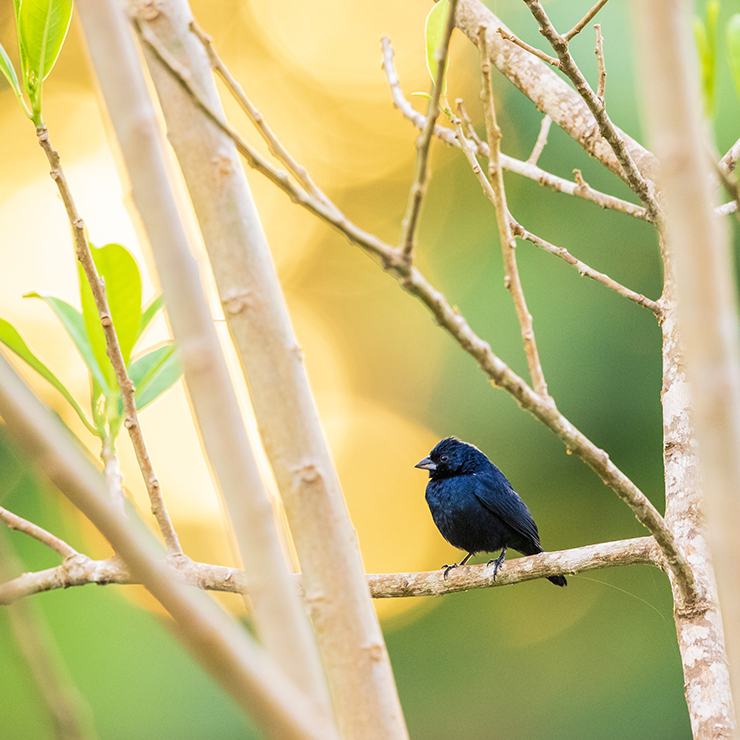
Within the newest instalment of the continuing documentation of the curious recurrence of the quantity three within the avifauna of Trinidad and Tobago, we arrive on the triad of Grassquits. For the uninitiated, whereas on a deep dive into Trinbagonian ornithology a couple of years in the past I observed teams of three popping up in a number of locations. With the nation itself having a tri- prefix, the island of Trinidad options three mountain ranges – one among which is named the Trinity Hills.
I’ve written on this characteristic a number of instances earlier than, and the already spectacular record is frequently increasing:
Bitterns | Trogons | Antshrikes | Spinetails | Manakins | Hermits | Honeycreepers | Warblers | Myiarchus | Nighthawks
The frequent grassquit on each islands is the endearing Blue-black Grassquit. Males are well-known for his or her leaping territorial shows; what they lack in gaudy Neotropical colors they make up for in charisma. Females are a heat brown with a streaky chest.

As their title implies, male Blue-black Grassquits are bluish black.
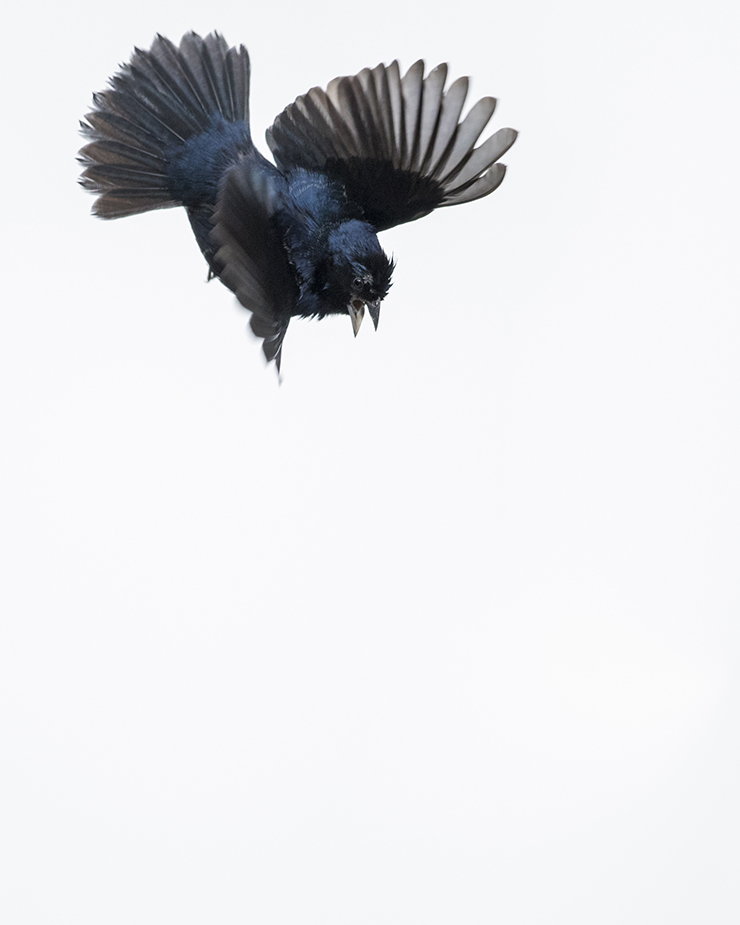
A male Blue-black Grassquit in show mode.
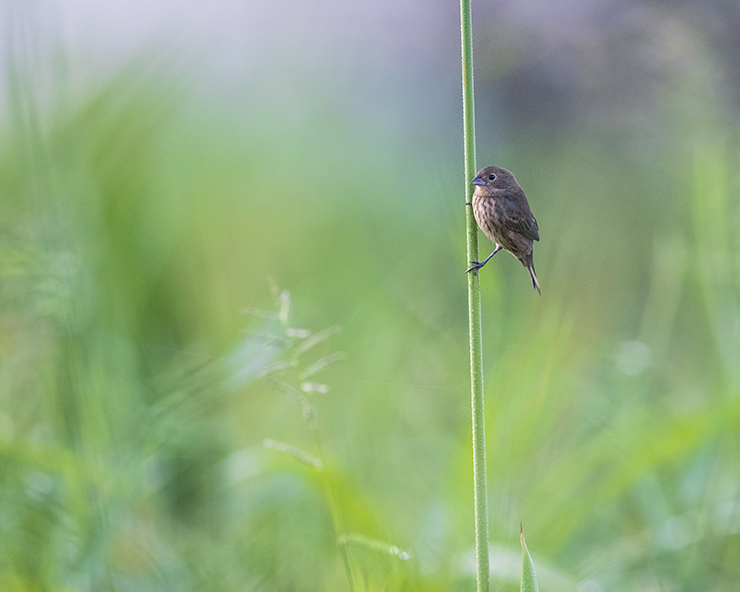
Blue-black Grassquit, a feminine.
The islands off the coast of northwest Trinidad are geologically extra carefully associated to Tobago than they’re to Trinidad. That is mirrored within the birdlife of the islands, specifically pertaining to this text is the Black-faced Grassquit. These seed-eating birds are discovered on Tobago in addition to on Trinidad’s offshore islands straddling the hole between Trinidad and Venezuela – however should not discovered on mainland Trinidad.
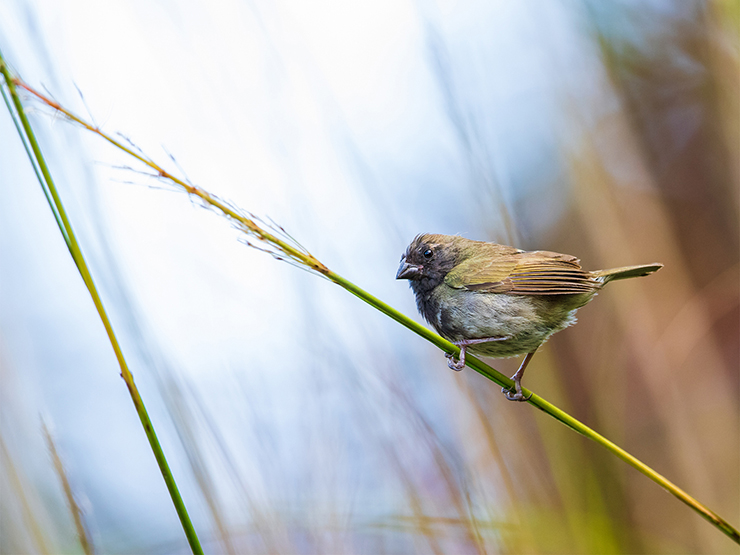
Solely the male Black-faced Grassquit carries a black face.
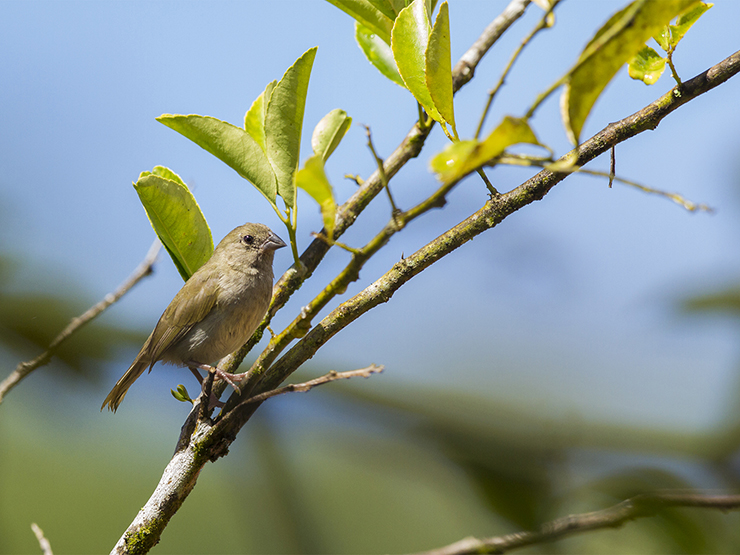
Feminine Black-faced Grassquits are mild uniform olive-green.
The one grassquit that’s discovered on a single island is the Sooty Grassquit. As its title implies, males appear like they’ve simply flown out of a pile of ashes. Females are rather less nondescript, with brownish wings giving technique to a light-weight olive breast and stomach. This species shouldn’t be frequent in low-lying grassy fields typical of grassquits, however tends to gravitate towards extra wooded areas, feeding on grass seeds in clearings and forest edge habitat. The Sooty Grassquit has an attention-grabbing distribution, being mostly discovered alongside the southeastern coast of Brazil.
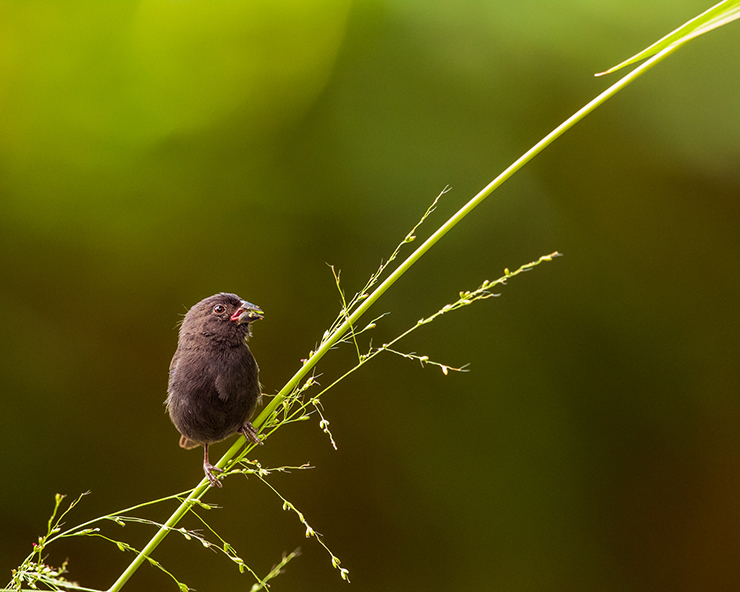
Sooty Grassquit, using an efficient technique to strip grass seeds.
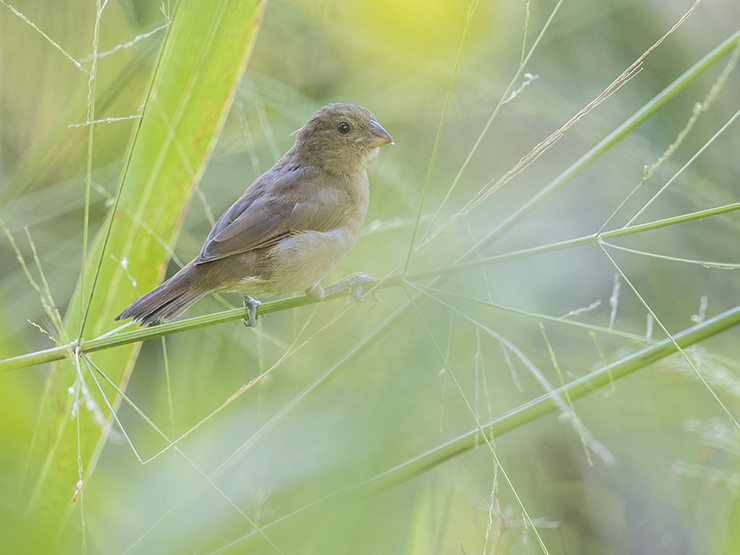
Sooty Grassquit, feminine.






